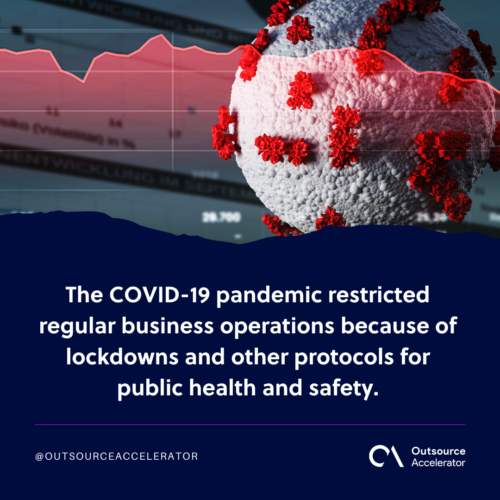Key entrepreneurship statistics: Staying updated in 2025

More than just profitability, entrepreneurs start businesses to solve a problem within their market. They give better quality of life to people with the efficiency, fulfillment, and opportunities their products and services offer.
They think big, and not just of the advantages of entrepreneurship to the comfortability of their lives. Creative people with basic finance principles are most likely to succeed as entrepreneurs.
Technological developments and advancements in the constantly changing world allowed more entrepreneurs to thrive.
This article will serve as a fountain of knowledge about entrepreneurship statistics for existing and aspiring entrepreneurs.
Entrepreneurship statistics: Why do entrepreneurs start a business?
Financial independence is undoubtedly on the top list behind an aspiring entrepreneur’s goal on his journey.
More than just income, a sense of fulfillment encourages entrepreneurs to invest in their businesses. The Hurun Global Rich List 2023 revealed that 75% of billionaire entrepreneurs are self-made.
Babson’s report shows that 62% of adults consider this as a good career choice because of the personal and overall benefits that come with it.
According to Guidant’s survey, autonomy (60.87%) and corporate discontentment (47.64%) are the two most extensive entrepreneur grounds.

How do entrepreneurs fund their businesses?
As per NorthOne research, entrepreneurs start their businesses from the following funding options:
- Some people prioritize spending after saving. It is why 66.3% of entrepreneurs have the privilege to invest using their funds.
- Other people are simply looking for other ways to earn more, making 27.6% of the entrepreneurs get their financial source from their jobs.
- 11.3% are lucky enough to get support from their family and friends, whereas 6.4% are donations from them.
- Financial institutions also offer different loans for aspiring entrepreneurs–which are not too heavy to pay. 11.2% seek their help for capital costs.
- The last two resorts of entrepreneurs are credit cash advance (9%) and investors, grants, or crowdfunding (below 3%).
Global entrepreneurship statistics
Innovation and determination are two words you can associate with entrepreneurship. Establishing and growing a business takes time for entrepreneurs.
Global entrepreneurship requires an entrepreneurial mindset wherein an individual has to be:
- Innovative
- Curious
- Flexible
- Adaptable
- Persevering
- Visionary
- Driven
- Willing to learn
- Passionate
Never-ending tasks and decisions face an entrepreneur daily, which only sometimes leads to success for all entrepreneurs.
While it could not be for everyone, entrepreneurship is global. In every country, a huge percentage of the population already own their business. These entrepreneurs have helped an economically wealthy country.
This section will inform and inspire you about taking your path toward entrepreneurship through the people that had been through the process.
What percentage of people are entrepreneurs?
Several studies conducted by the Global Entrepreneurship Monitor showed that:
- With over eight billion people worldwide, 7.3% of this, or 582 million, are entrepreneurs. These numbers are from the 2020-2021 report, indicating that the pandemic caused a more significant increase.
- 274 million of these entrepreneurs are women who want to grow their wealth instead of dwelling on the lack of job opportunities.
- One of five entrepreneurship ventures is family-based, especially in Colombia, United Arab Emirates, and Uruguay.
Statistics on successful and failed entrepreneurs
The economic principle of demand can be understood as the willingness of consumers to pay for the product and service price. For starters, one should know that businesses with the highest success rates are:
- Insurance
- Real estate
- Financial businesses
Some businesses fail because the demand for what they offer drops. Forbes reported that 42% of entrepreneurs fail due to no real market for their products and services.
More so, turnovers are what keep businesses running and expanding. 38% of the companies fail due to insufficient funds to continue operations.
Entrepreneurship statistics: Gains and losses of entrepreneurship
In any investment, there are risks one must manage to prevent the existence of failure over the possibility of success.
Entrepreneurs were once just individuals with ideas they brought into life–their first risk. For them, different aspects of freedom are feasible with entrepreneurship, whether being finally financially stable or having no boss to work for.
Guidant Financial’s research uncovers that entrepreneurs understand that these two elements create a systematic and healthy relationship within the business:
- Communication skills (54.55%)
- Teamwork skills (46.56%)
It would be uncomplicated to work for their customers with the above results. However, 38.36% of entrepreneurs highlight that sales and customer relationship management skills are critical to gaining more for one’s business.
The eagerness towards entrepreneurial success has many benefits, not just gaining money to one’s savings. An entrepreneur will have a flexible schedule, autonomy, personal growth and development, expanded network, and digital literacy.
Sometimes, expenses exceed an entrepreneur’s revenues–loss. NorthOne disclosed that labor (70%) and inventory (25%) are the primary costs of entrepreneurship.
Entrepreneurs must stay committed despite problems affecting revenues, especially from the market.
Losses can be due to negligence alone or accidents. It is up to an entrepreneur what the next step would be to bounce back for their profitability and image to the public.

Entrepreneurship statistics on small businesses
A small business can be anything–a retail store, manufacturing venture, service business, e-commerce, or even freelance business.
It has its name for having less than 500 employees with one or few owners. It can be classified as a sole proprietorship, limited liability company, or corporation.
Despite its “size,” it can benefit the public and economy just as much as large businesses. As per Brimco, 90% of the businesses around the globe are small businesses.
Entrepreneurs starting a small business
Brimco also shared the following results under small business owner statistics:
- 50% of these existing owners started their journey in the comfort of their homes. These people have a work-from-home setup or limited resources to start on.
- Even in business, age is just a number. 44% came from generation x, people ages 43 to 58. 41% are baby boomers that are born on the years 1946 to 1964. Lastly, 12% belong to the 27 to 42-year-old millennial generation.
- To avoid becoming corporate enslaved people or underpaid employees, 29% of small business owners wish to be the boss to themselves. They match this to their passion to be more fulfilled and financially stable.
- Many disregard other essential factors in owning and managing a successful small business—fortunately, only 2% focus solely on the market opportunity of their product or service.
- Education is still an edge even if one’s business has no specific qualifications. 54% of small business owners attained a bachelor’s degree or higher. These people will likely make wiser decisions on risks for the business accomplishments.
- All owners have unique struggles that, when overcome, will result in their growth. An estimated 56% find hiring the appropriate employees for their small businesses difficult.
- Yet no matter how difficult maintaining a business is, 92% of small business owners do not have regrets since they started theirs.
- Staying in the business world indicates hitting target objectives through what one provides to the target market. About 50% of small businesses could exist for more than five years.
Relevance of small business in innovation and economic growth
The essence of being a small business owner is innovation. Small businesses’ primary focus is introducing a new product or service for the common good. It is possible because they consistently emphasize a closer connection to their consumers.
Loyalty from customers is attainable for small businesses. Despite the changes in their preferences and other uncontrollable factors, they can easily adjust their products and services compared to larger companies.
Different small businesses mean other markets are being reached, solving some social challenges consumers encounter.
As seen from the data of Brimco, owners provide 50% of jobs worldwide. They also value employee recruitment and retention. As a result, 63.17% invest in higher compensation for their employees.
How are entrepreneurship statistics affected by the recent pandemic?
The COVID-19 pandemic restricted regular business operations because of lockdowns and other protocols for public health and safety. People must stay at home for many months to prevent getting the virus.
The National Institute of Health survey revealed that 41% of entrepreneurs experienced detrimental effects, such as revenue losses. Merely 63% of all businesses continued to be profitable in 2020.
On the other hand, according to the Yelp Economic Impact Report, not all small businesses have the resources, skills, and strengths to face the growing COVID-19 effects on the business world. 60% had to halt or shut down to avoid heavier losses.

This pandemic, however, was a catalyst for new entrepreneurs. Losing jobs but having extra savings, entrepreneurs thrived with the online setup or e-commerce.
This was the case in the Salesforce Survey, revealing that 32.9% of US entrepreneurs started their businesses during COVID-19.
The increase in the entrepreneur count from 2020 to 2021 is 24%. 30% of these pandemic entrepreneurs only want an online platform to reach their market.
As aspiring entrepreneurs, everything here is a basis for informed decisions. Entrepreneurship statistics are more than just numbers. Looking beyond it means appreciating the government and organizations collecting data tracking progress, performance, and problems.
Remembering and understanding every result could equip an aspiring entrepreneur with the right motivation toward the right business direction.
A desire to have a small or large business needs a lot of preparation to avoid potential mistakes already made by others.







 Independent
Independent




